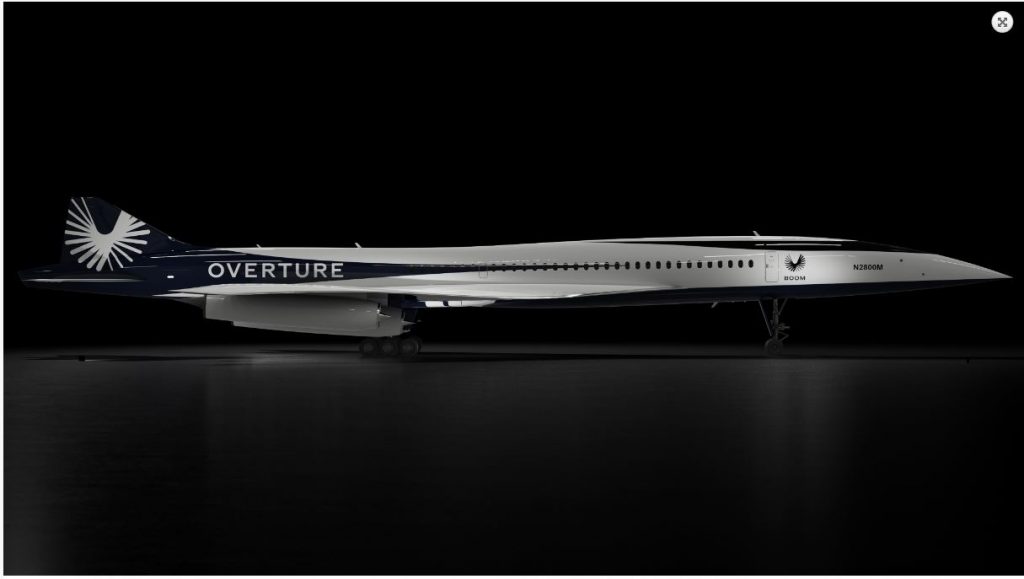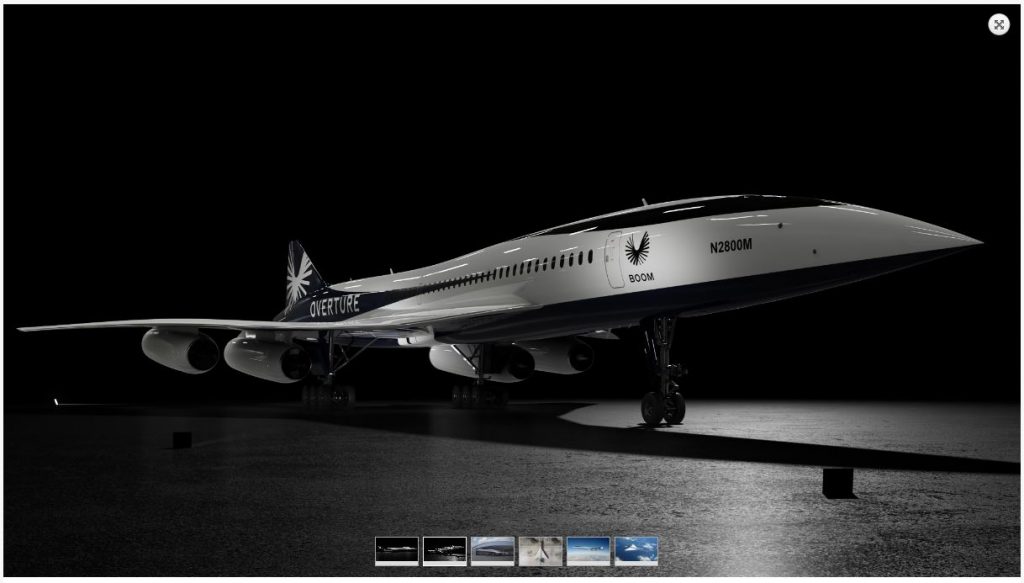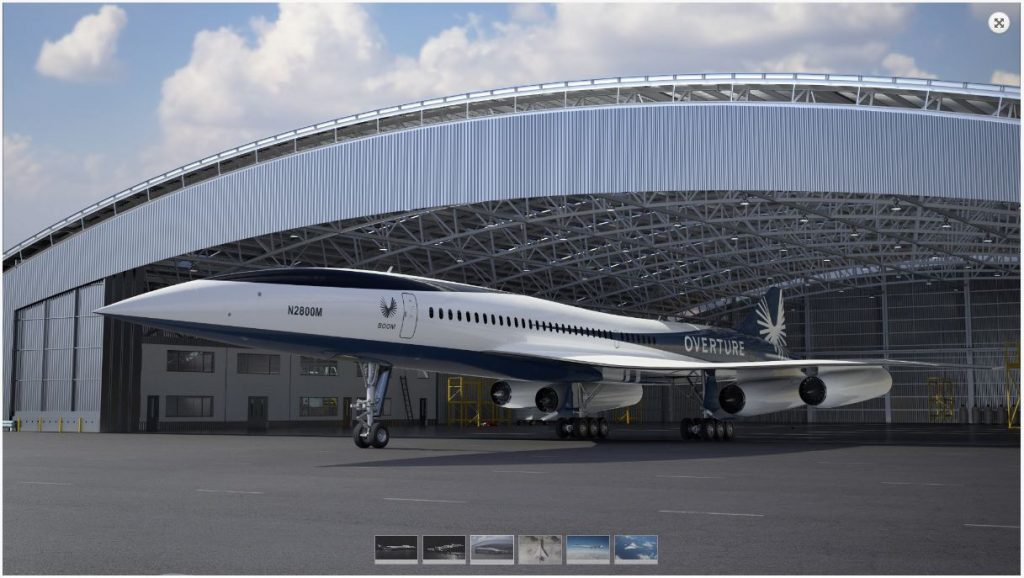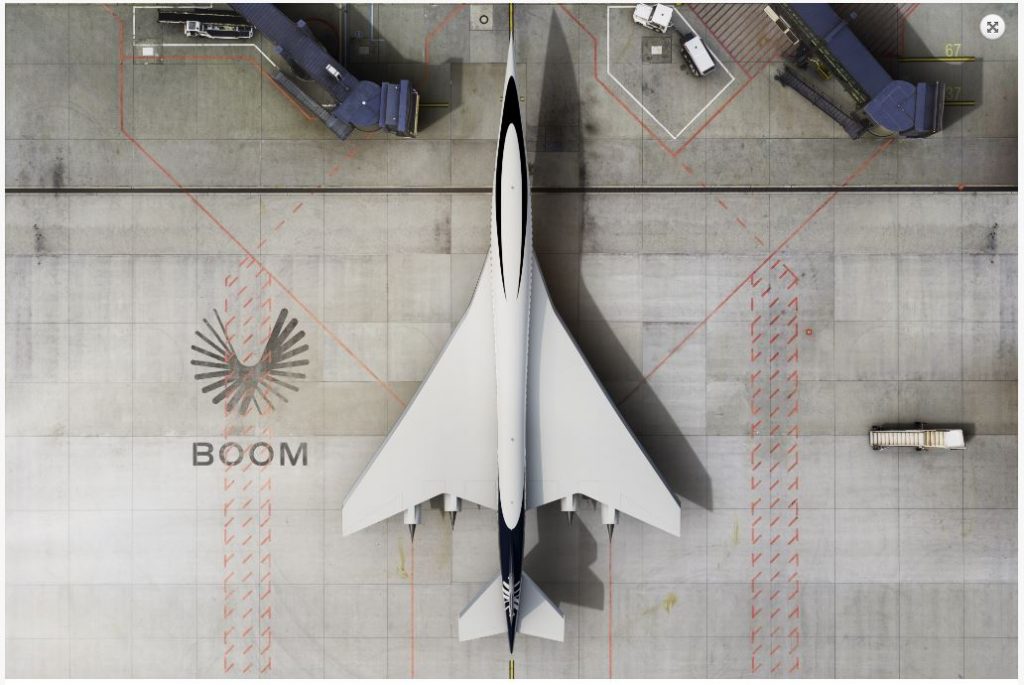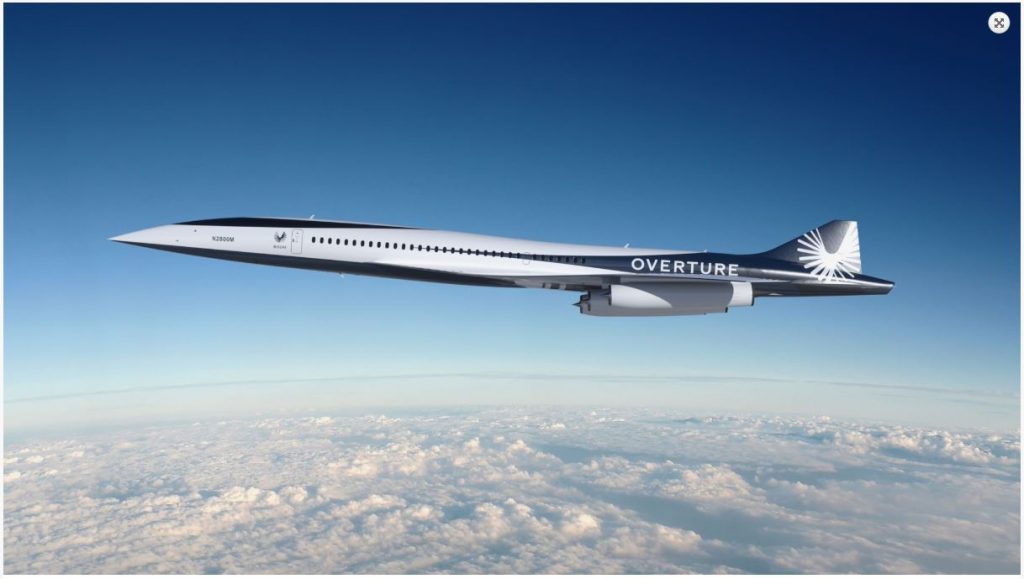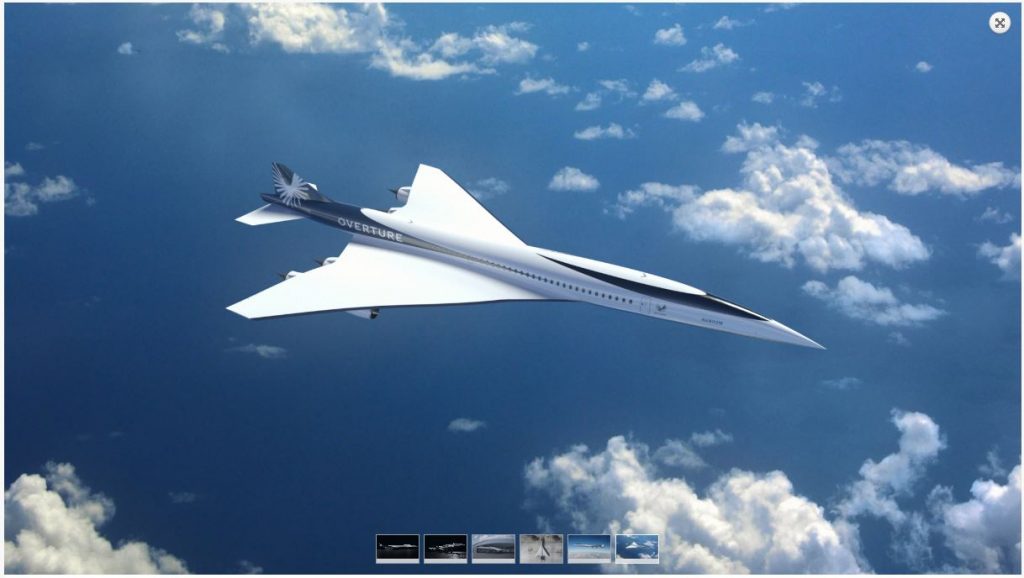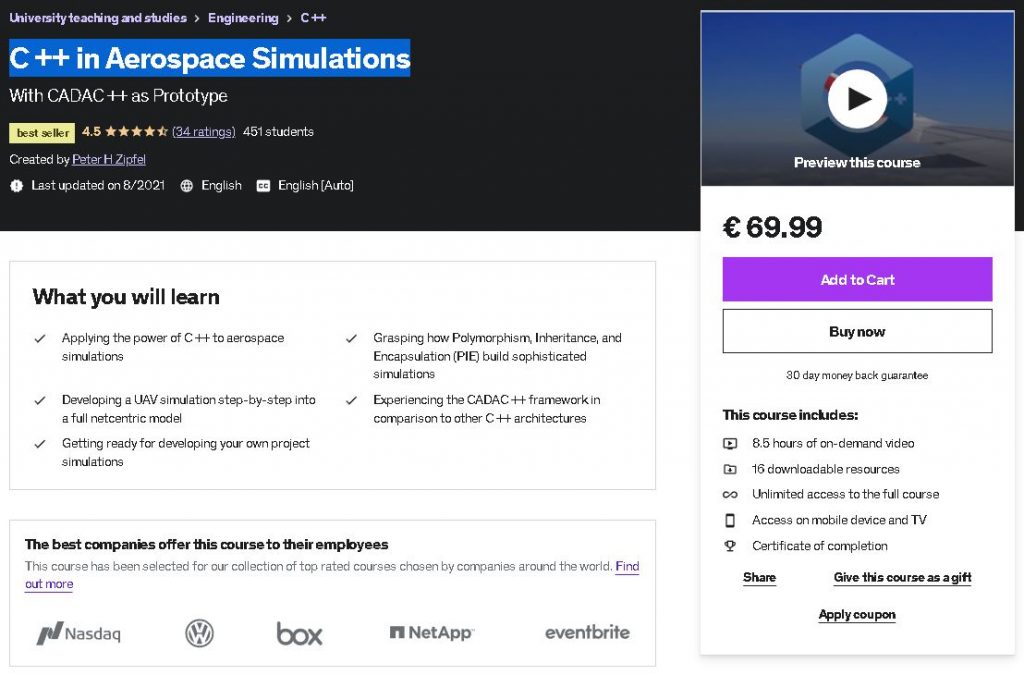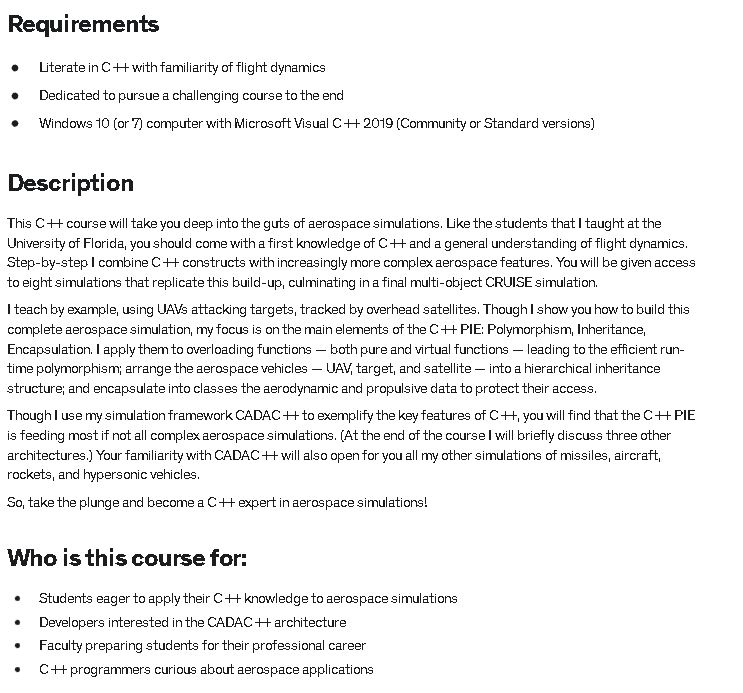-
Test Hazard Analysis – Fillable PDF Worksheet
Don’t reinvent the wheel for your risk management process. This form includes fillable fields and instructions for use as a test hazard analysis worksheet.
-
Flight Test Risk Management – Vocabulary Reference
All essential terminology with precise definitions and differences between FAA/USAF/USN usage.
-
Quick Reference Guides
Printable rubric showing categorized lists of typical tests, arranged by risk category – High / Medium / Low – to aid risk assessment. Also included: standalone guide to create effective risk mitigations.
Inside the Wind Tunnel: How Aircraft Planes are Tested
Have you ever wondered what happens inside the wind tunnel where aircraft are tested? Today, we’re going to take you behind the scenes of the wind tunnel, talk about what happens there, and talk about some of the most interesting aircraft being tested in such facilities today. Let’s get started! First off, it’s worth mentioning that wind tunnels have been around since 1871 when French physicist Gustave Eiffel first built one in his labs.
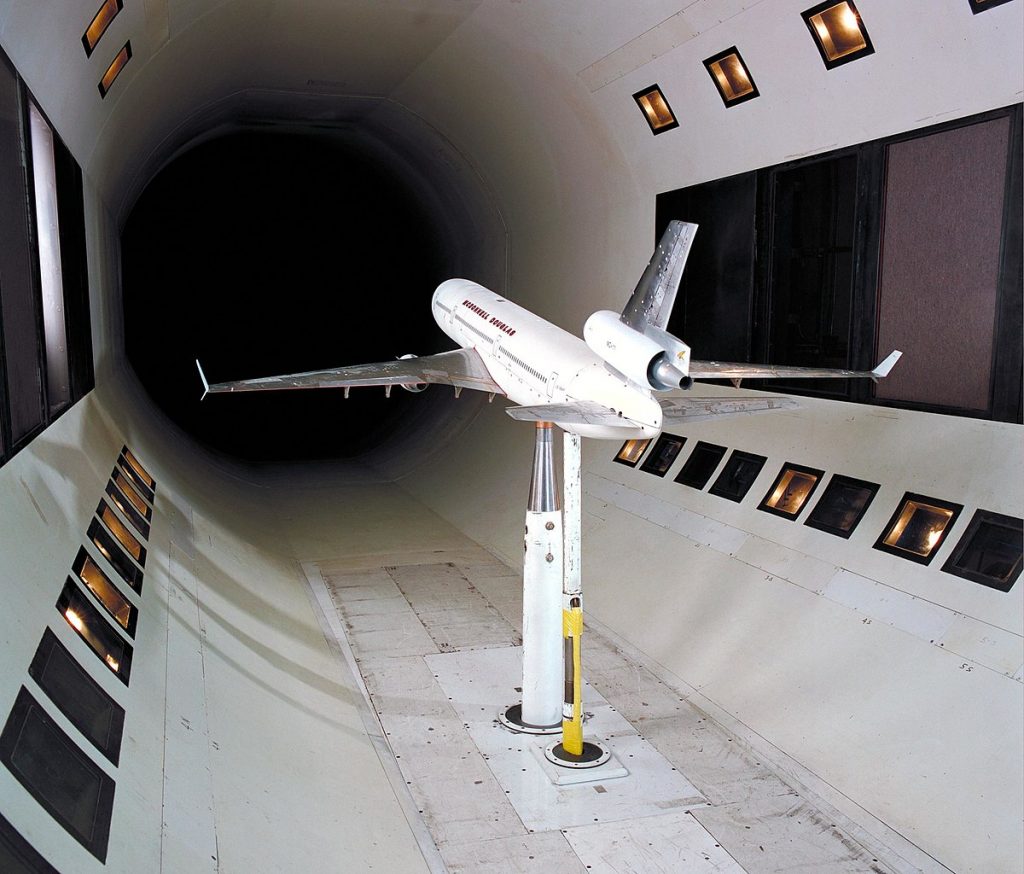
A Brief History of Wind Tunnels
Wind tunnels were invented by a French engineer, Benjamin Boullee in 1699. His initial intention was to solve problems with designing large buildings such as cathedrals. However, these early wind tunnels were crude and could not replicate the forces of nature. Frank H. Wenham (1824-1908), a Council Member of the Aeronautical Society of Great Britain, is generally credited with designing and operating the first wind tunnel in 1871. The tunnel was built by John Browning, an optician, and located at Penn’s Marine Engineering Works at Greenwich, England. The tunnel was 3.7 meters (12 feet) long and 45.7 centimeters (18 inches) square. Even if the first wind tunnel in Great Britain was operated by a compressed air ejector the following wind tunnels used the air moved by a fan disposed upstream of the wind tunnel’s test section. The change to suction is an important step in wind tunnel development. When the fan is disposed downstream of the test section and it no longer interferes with the model, which guarantees the quality of flow.
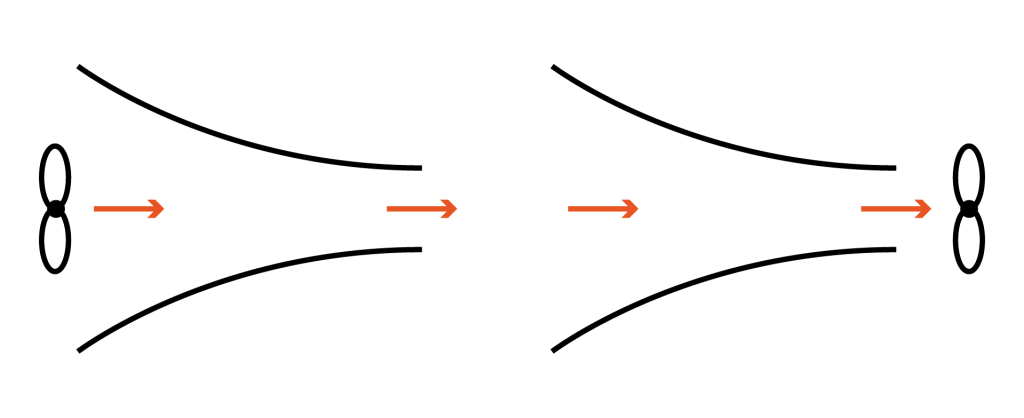
In 1871 the first patent for an improved wind tunnel was filed and by 1900 there were many innovations that increased the accuracy of testing results and data collection methods, but it was not until 1930 when a British scientist, Alan Osborne published his groundbreaking paper “The instability of air in rectangular channels” that researchers had enough data to create what we now call modern day wind tunnels.
Today, wind tunnels come in all shapes and sizes depending on their use. They can be small like those used for unmanned aerial vehicles or larger for airplanes or helicopters. They can also be open circuit (with an open front) or closed circuit (having a closed front). Wind tunnel tests ensure the safety of aircrafts through research and analysis before they are put into production.
Aerodynamic Force Terminology
When evaluating airplane performance, wind tunnel tests help to calculate how efficient the aircraft is in generating lift and minimizing drag. When a force on an object results in a change of its velocity, that force is known as an aerodynamic force. An object experiencing aerodynamics will also experience a change in its pressure with altitude.
There are four forces to consider when evaluating airplanes during wind tunnel testing. The first three aerodynamic forces to consider when conducting wind tunnel tests are lift, drag, and thrust; these forces work together to determine if an aircraft will fly successfully.
Wind Tunnel Structure – How Does It Work?
Three main criteria that are commonly used to define wind tunnels are maximum achievable speed, flow uniformity, and turbulence level. Therefore, the design aim of a wind tunnel, in general, is to get a controlled flow in the test chamber, achieving the necessary flow performance and quality parameters.
There are five basic parts of the wind tunnel: The Settling Chamber, the Contraction Cone, the Test Section, the Diffuser, and the Drive Section. During a test, the test object is placed in the test section of the tunnel, and the air is made to flow past it. Various types of instrumentation are used to determine the forces on the model.

In some wind tunnel tests, the aerodynamic forces and moments on the model are measured directly. The model is mounted in the tunnel on a special machine called a force balance. The output from the balance is a signal that is related to the forces and moments on the model. Balances can be used to measure both the lift and drag forces.
The balance must be calibrated against a known value of the force before, and sometimes during, the test. Force measurements usually require some data reduction or post-test processing to account for Reynolds number or Mach number effects on the model during testing.
Four air properties affect the way it flows by an object: viscosity, density, compressibility, and temperature. With the model mounted on a force balance, lift, drag, lateral forces, yaw, roll, and pitching moments over a range of angles of attack can be measured.
Different Types of Wind Tunnels
Wind tunnels range in size and complexity depending on what they’re being used for. For example, a simple wind tunnel might look like a tunnel with one closed end and a fan mounted on one side. More advanced wind tunnels may use exhaust blowers to create more turbulence and can be so complex that they include working cabins within the tunnel. The air inside a wind tunnel is pulled through by some type of fan, typically mounted at one end of the tunnel, which is called an intake. At the other end of the tunnel there is either an observation window or a test section where measurements are taken. Many modern tunnels have observation windows throughout their length so that measurements can be taken from different positions within the tunnel.
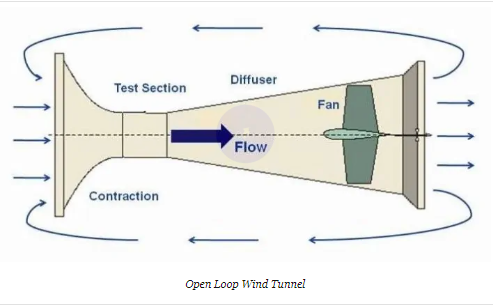
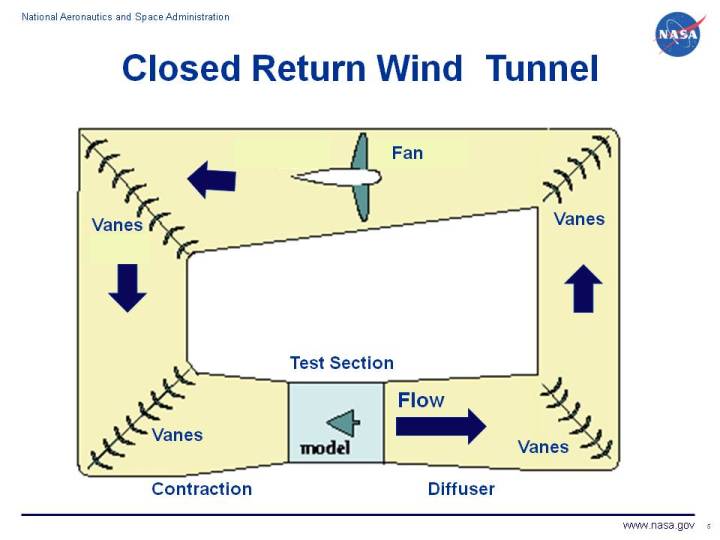
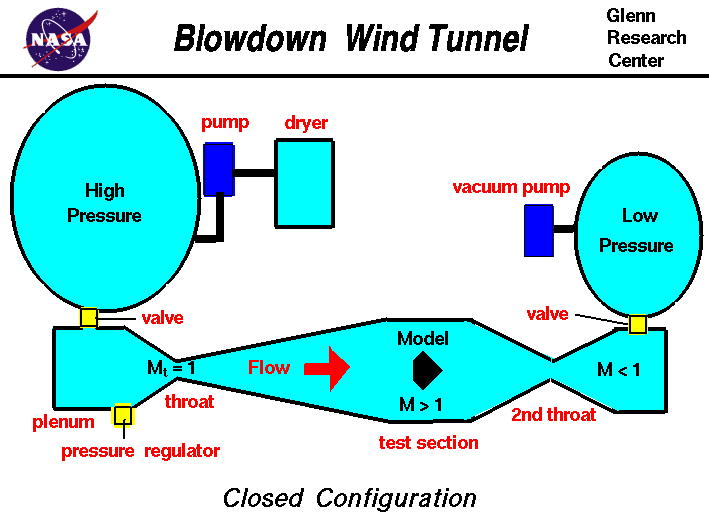
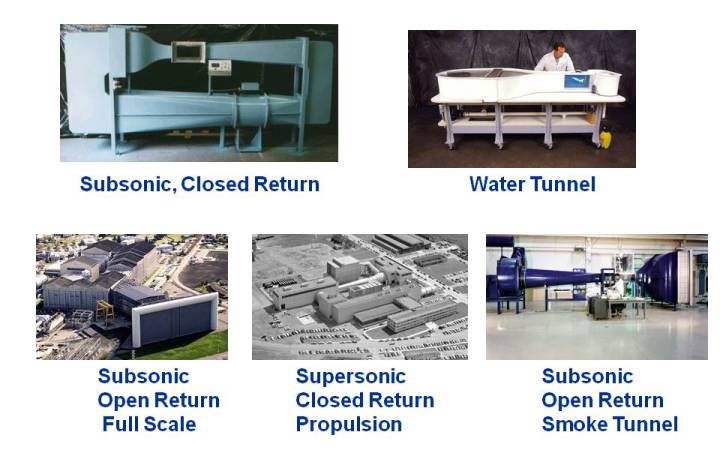
Wind Tunnel Classification
Wind tunnels are generally classified by the amount of speed they can produce as either low-speed (Low-Speed Wind Tunnels (LSWT)) or high-speed. They are further classified as:
- Subsonic wind tunnels (80 percent of the speed of sound) – these are furtherly split into “Incompressible subsonic” (between Mach 0 and about 0.3) and “Compressible subsonic” (between about Mach 0.3 and about 0.8).
- Transonic wind tunnels – between Mach 0.8 and 1.2 – about the speed of sound.
- Supersonic wind tunnels – between Mach 1 and 4 – up to 6 times the speed of sound.
- Hypersonic wind tunnels – Mach is greater than 4 – 5 – up to 12 times the speed of sound.
- Hypervelocity wind tunnels – more than 12 times the speed of sound.
Specialized Wind Tunnels:
- High enthalpy wind tunnels are designed to study the flow of air around objects moving at speeds much faster than the local speed of sound (hypersonic speeds). “Enthalpy” is the total energy of a gas stream, composed of internal energy due to temperature, the product of pressure and volume, and the velocity of flow.
- Atmospheric entry wind tunnels or plasma wind tunnels use plasma to simulate aerodynamic heating and a high Mach number state at reentering into the atmosphere. It reproduces re-entry conditions by heating gas to several thousand degrees Celsius, at air flows seven times the speed of sound and with stagnation pressures as high as 50 atmospheres. Varying Reynold numbers indicate the steady or turbulent fluid flow past the object or in the tunnel.
- Climatic wind tunnels have the capability of recreating climatic conditions such as solar radiation, temperature, and humidity, e.g., rainfall, snowfall, and icing. It is used for testing things such as wind turbines, bridge cables, or fans in heating, ventilation, and air conditioning (HVAC).
- Shock tubes or blow-down wind tunnels produce airflow by rapid discharge of a high-pressure storage tank or by suction from an evacuated reservoir. They can replicate and direct blast waves simulating actual explosions and their effects. Shock tubes are used to investigate compressible flow phenomena and gas-phase combustion reactions.
Wind Tunnel Applications
Wind tunnels simulate airflow over an aircraft and measure performance, efficiency, and stability. The process is used to test designs and understand aerodynamics to identify optimal performance on-air as well as in ground tests.
Aircraft Testing – Low-speed and High-speed

- Low-speed aircraft wind tunnel testing to measure the aerodynamic characteristics of aircraft – lift and drag properties, as well as stability of aircraft and engine components. These wind tunnel tests are used for static stability testing and pressure measurement.
- The aerodynamic characteristics of aircraft at speeds of takeoff and landing etc.
- Shock waves for high-speed aircraft are visualized using water as working fluid.
- Understanding the aeroacoustics by exploring aerodynamic noise, i.e., turbulent fluid motion and acoustic pressure fluctuations, i.e., external noise generation via aerodynamic forces interacting with surfaces.
- Water spray systems are applied for icing testing.
Spacecraft Testing – High-speed (Supersonic, Hypersonic, Hypervelocity)
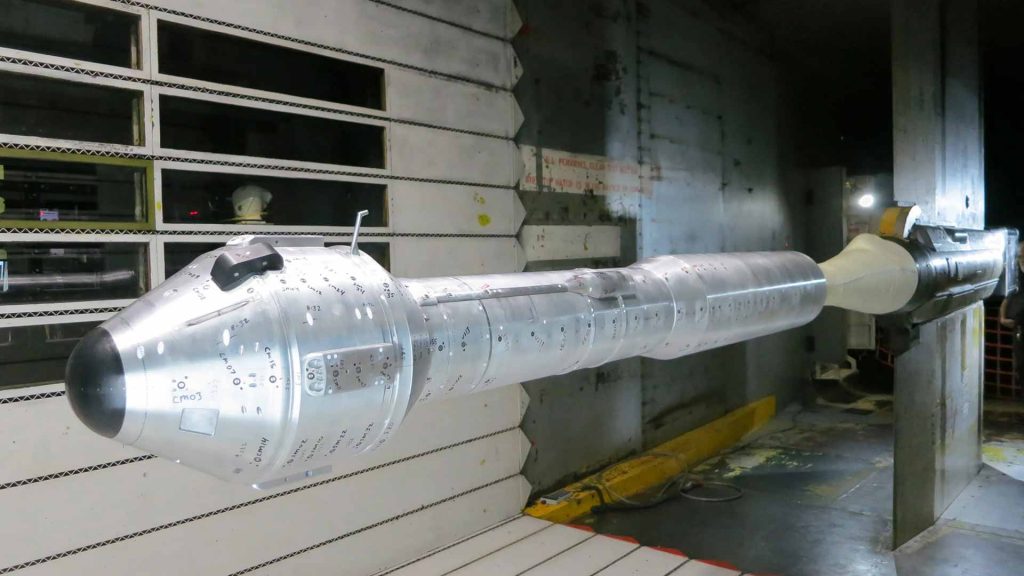
- Atmospheric entry wind tunnels or plasma wind tunnels to characterize the aerodynamic behavior and heating of materials and structures by entry simulation on space vehicles such as rockets, satellites, launch vehicles, spacecraft.
- Simulation of the desired burn-up during atmospheric reentry to estimate the risk of debris reaching ground.
- High-enthalpy wind tunnels for heating testing of thermal protection systems for re-entry vehicles.
Data Acquisition and Sensors
Engineers use a number of instruments while testing an airplane in a wind tunnel including pressure sensors and airspeed probes that give feedback on speeds, engine power settings, etc.
Wind tunnels are used by engineers to test forces against wind pressure. Making precise measurements of pressures and forces on the test model allows the engineer to predict them on the full-scale aircraft and improve its aerodynamic performance.
In order to perform these measurements, engineers must use sensors and signal conditioning equipment in order to store and analyze the data. In other words, modern data acquisition systems are needed.
For wind tunnel testing engineers usually use dynamic sensors such as:
- Pressure sensors
- Microphones
- Force sensors
- Strain gauges
Wind tunnel sensors are organized by speed classification. From subsonic use of condenser microphones for acoustic holography to shock sensors for studying boundary layer transition of hypersonic re-entry vehicles. Sensors are usually installed inside the wind tunnels or close to the model itself.
Signal Conditioning
Signal conditioning is an electronic circuit that manipulates a signal in a way that prepares it for the next stage of processing. Many applications involve environmental or mechanical measurement from sensors, such as temperature and vibration. These sensors require signal conditioning before a data acquisition device can effectively and accurately measure the signal.
Once the signal is correctly conditioned it is ready to be stored by the data acquisition system and prepared for analysis using signal processing software.
How to Become a Pilot and Fly Airplanes
If you’ve ever wanted to become a pilot and fly your own aircraft, here’s how to do it step by step. It’s not as easy as you might think, but it’s definitely possible to get started on the path to becoming an aviator if you’re willing to commit the time and energy necessary to becoming one of the pilots that fly the planes you ride in every day!

Step 1: Get Educated
To become a pilot you first need to get educated. Pilots need to have at least 250 hours of flying time in various conditions including day, night, and during inclement weather. Your flight instructor will give you a logbook and keep track of your hours for you. As long as you are 18 years old and meet the physical requirements for being a pilot, it is possible to learn how to fly an airplane by getting an online aviation degree or by taking courses offered by community colleges or universities. You can also receive ground school training from local aviation schools such as The Discovery Flight Training Center where they offer introductory courses on how planes work, FAA regulations, airspace maps, navigation charts, radio communications procedures and more. Once you’ve obtained your degree or finished all the required classes then it’s time to take the written test which includes questions about aerodynamics and principles of flight among other topics related to airplanes.

Step 2: Get Certified
Don’t forget, you’ll need a pilot’s license to fly an airplane. Becoming an airline pilot is an even more difficult task that requires many years of additional training. So it’s best not to become an airline pilot unless you are committed to the aviation industry. The first step in becoming a private pilot is earning your FAA student pilot certificate by passing the FAA written knowledge test (also known as the knowledge test) and, after completing their flight training, their solo cross-country flights and on-the-job training with their flight instructor.
Step 3: Obtain Your License
In order to get your license, you’ll need about 250 hours of flight experience. You must pass three tests in order: the written exam, which is given by the Federal Aviation Administration (FAA); a single-engine plane flight test; and the multi-engine plane flight test. Don’t worry – most of these are on video or DVD! Check out the FAA website for more information.
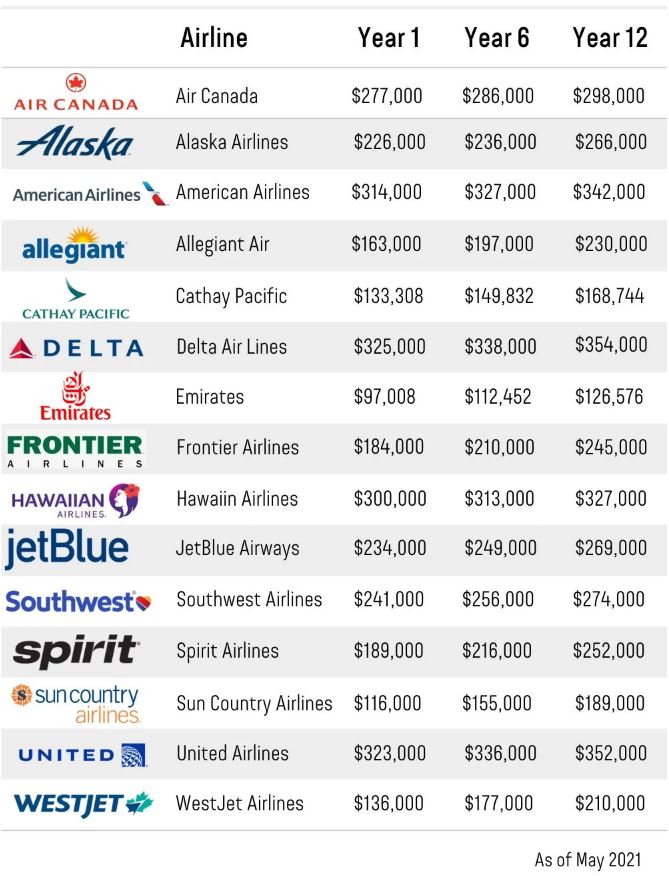
Step 4: Get Hired by an Airline
After obtaining the necessary pilot certification, the next step is applying for an airline job. You will need strong experience in the field of aviation in order to be eligible for these positions. Airlines are looking for pilots who have successfully completed flight training and attained commercial or military licenses, as well as logged several years as an experienced pilot with another organization. Some airlines also require first officers have an advanced degree in aviation before being hired.
Getting Hired by an Airline (Step 4) After obtaining the necessary pilot certification, the next step is applying for an airline job. You will need strong experience in the field of aviation in order to be eligible for these positions.
Step 5: Start Your Career
In order to become a pilot and fly airplanes, you must first complete the following steps: 1) Seek out volunteer opportunities that allow you to see what being an airline pilot is like. 2) Obtain a pilot certificate or instrument rating through an accredited aviation program. 3) Get your commercial pilot’s license by earning at least 250 hours of flight time with an FAA-approved flight school. 4) Apply for positions with airlines. 5) If accepted, complete other training required by the airline (such as courses on company policies). 6) Earn your multi-engine rating if desired. 7) Earning enough flight hours to gain seniority status before retirement age
Flight Test Risk Management
Flight Test Risk Management
The comprehensive course in professional Flight Test Risk Management. Teaches principles and processes meeting FAA and DoD standards, with essential concepts and skills for aerospace executives, flight test team members, and safety practitioners.
If you think risk management is expensive, try paying for an accident
 Risk takes many forms. Of course, this includes human injury and/or product/facility damage. It also includes financial, schedule, mission, compliance, organizational reputation, environmental, and many other areas of concern.
Risk takes many forms. Of course, this includes human injury and/or product/facility damage. It also includes financial, schedule, mission, compliance, organizational reputation, environmental, and many other areas of concern.
The fundamental perspective of professional flight test is risk management. Flight test is not a zero risk endeavor, nor should it be. Risk can have many dimensions, not just safety. The key is to target the right levels of risk, appropriate to answering the engineering questions. Although there will always be residual risk, the objective is to provide answers within a defined and accepted level of risk.
In this course, you will learn to identify test-specific hazards, with associated causes and effects. Through guided instruction and a student exercise, you will learn how to apply mitigations, reducing probabilities and severities for potential hazards.
This course teaches the concepts and practical application of Flight Test Risk Management as used by:
- Federal Aviation Administration’s (FAA) Aircraft Certification Service
- US Air Force Test Center (including Edwards AFB)
- US Navy – Naval Air Systems Command
- National Air and Space Administration (NASA) Flight Research
The test safety planning process taught by this course is essential not just for risk control during flight test execution, but enables efficient and effective development. Flight Test Risk Management is an essential component of a Safety Management System.
Practical Learning Objectives
Course content applicable to the entire test team
Flight test risk management is the fundamental perspective for professional flight test. This course is useful not just for flight test team members and safety practitioners, but also for accountable executives and program managers.
You will learn:
- Understand the value of flight test risk management
- Identify similarities and differences between flight test risk management and other safety processes
- Recall terminology related to flight test risk management
- Understand differences between Hazards, Causes, and Effects
- Apply the flight test risk management process to create robust test hazard assessments
- Be able to evaluate test hazards and identify related causes and effects
- Be able to apply effective hazard mitigations to preempt causes and reduce effects
- Be able to categorize risk assessments based on probability, severity, and exposure
- Apply flight test risk management principles for effective safety review before test
- Apply flight test risk management products to prevent mishaps during test execution
- Understand how flight test risk management principles are used after unexpected test results
Bonus material
The essential collection of tools and references

Flight Mechanics – From Theory to Certification of Aircraft
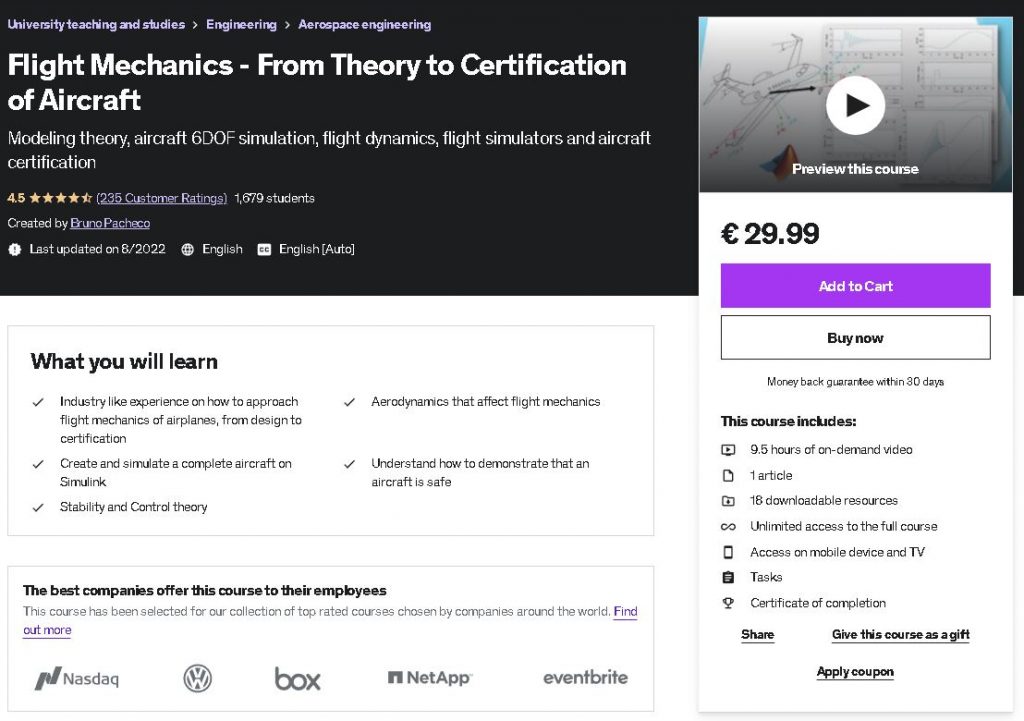
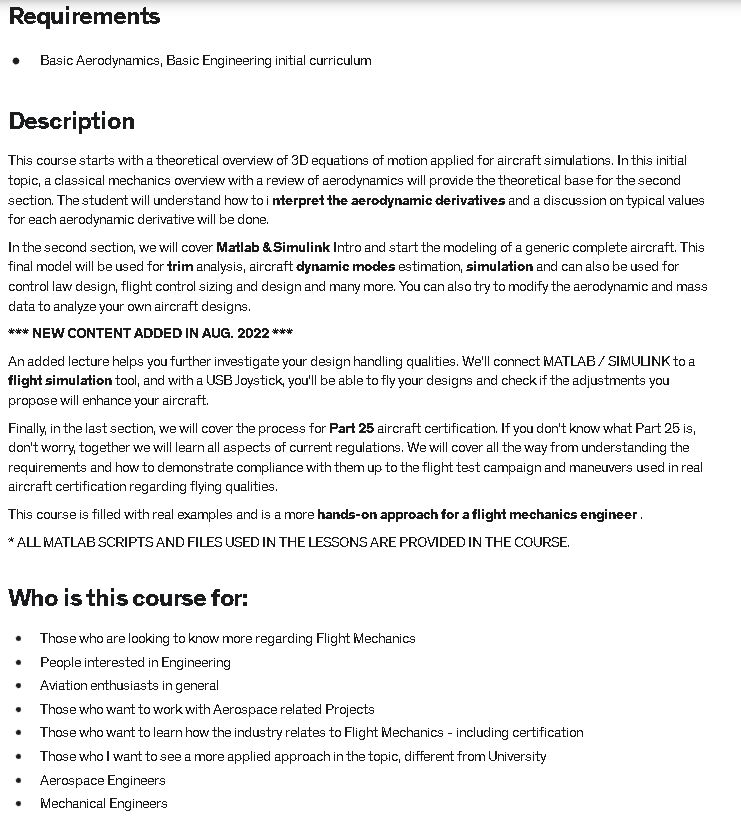
Flight Mechanics – From Theory to Certification of Aircraft
ENROLL NOW! — ONLY 10$ — CLICK HERE 
Aerospace Masterclass: Transonic Aerodynamics
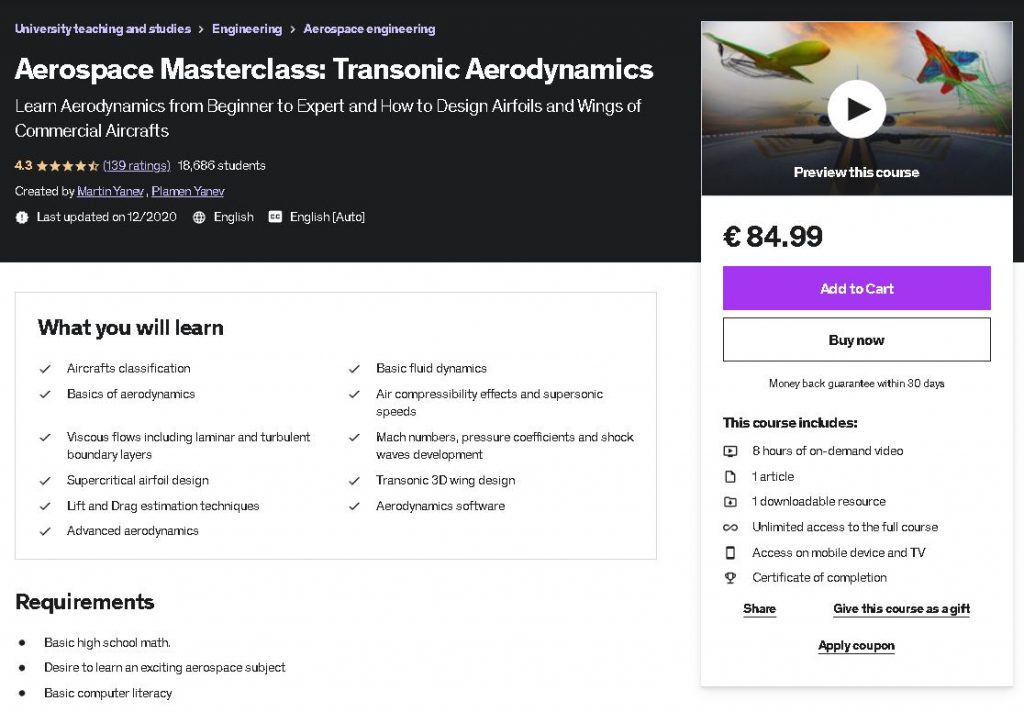
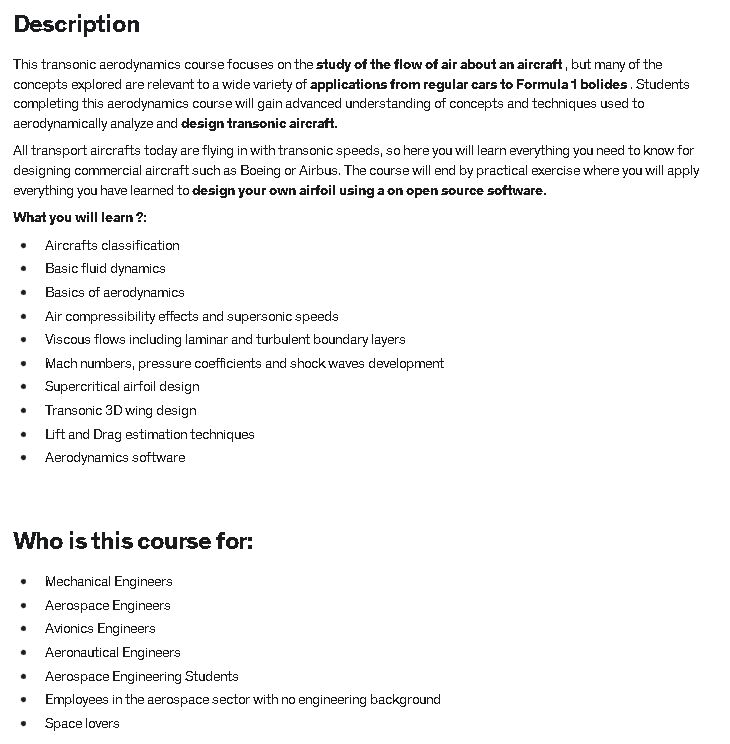
Aerospace Masterclass: Transonic Aerodynamics
ENROLL NOW! — ONLY 10$ — CLICK HERE
Aerospace Engineering: Aircraft Systems and Avionics
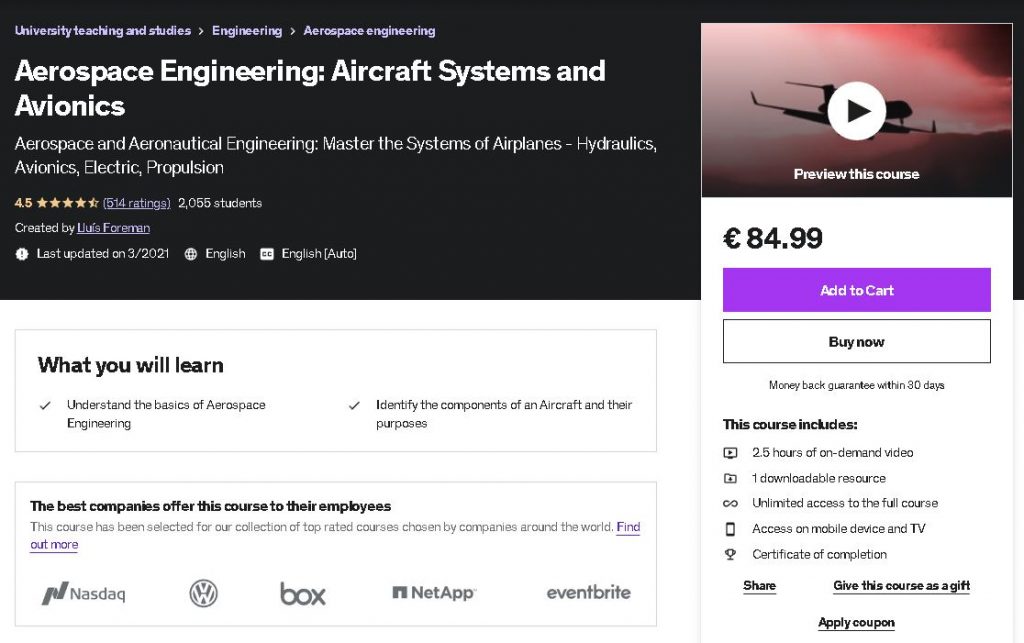
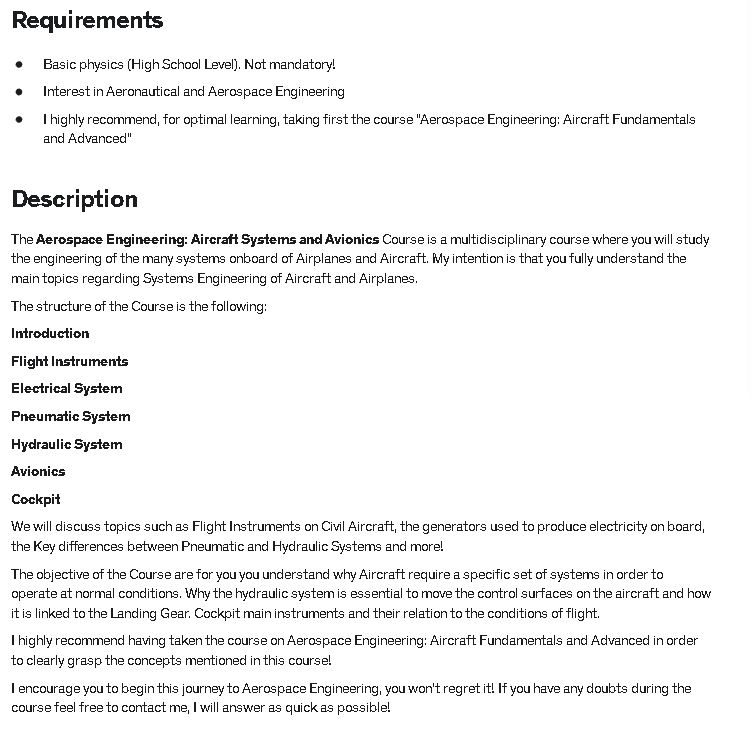

Aerospace Engineering: Aircraft Systems and Avionics
ENROLL NOW! — ONLY 10$ — CLICK HERE
Aerospace Masterclass: Aircraft Design
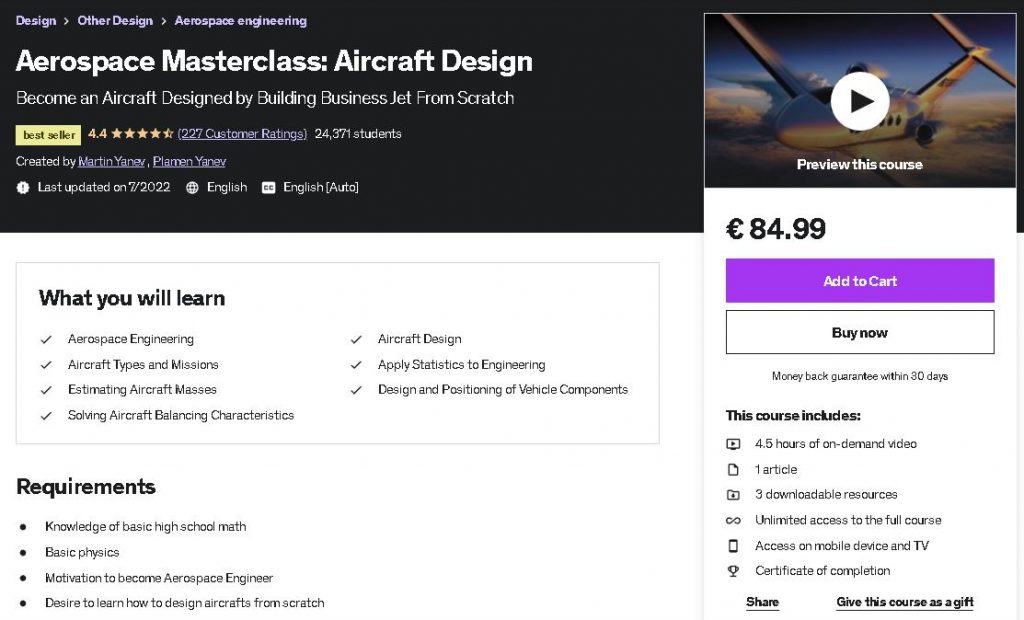
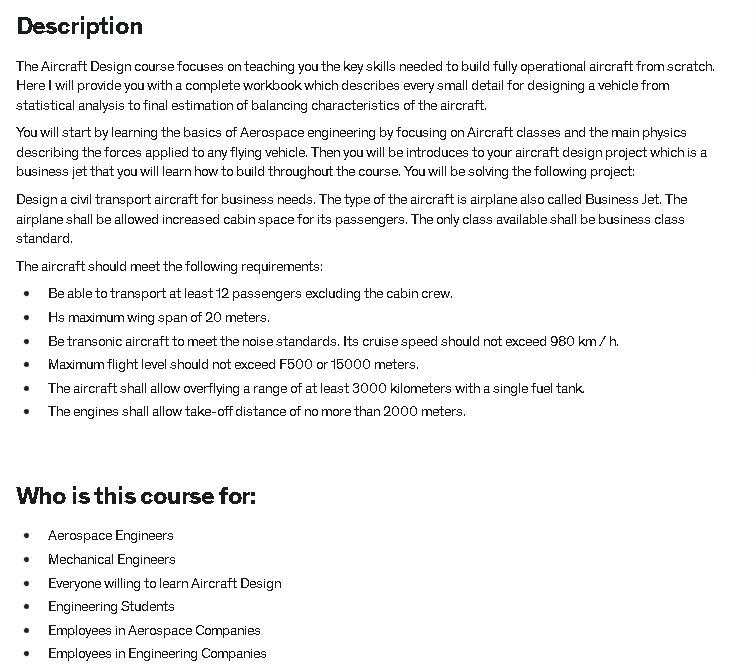
Aerospace Masterclass: Aircraft Design
ENROLL NOW! — ONLY 10$ — CLICK HERE
Airbus’ Blue Condor test flights will measure hydrogen engine contrails
Audio version of this article:
Airbus UpNext is to conduct a flight test program that studies contrails produced by a hydrogen combustion engine as part the company’s ZEROe roadmap.
The Blue Condor project will launch two modified Arcus gliders, one equipped with a hydrogen combustion engine, the other with a kerosene-powered combustion engine, to compare contrails emitted at high altitudes.
Test flights are scheduled for late 2022 in North Dakota, USA, in partnership with the University of North Dakota.
“Contrail characterisation is of significant interest to Airbus,” said Sandra Bour Schaeffer, CEO of Airbus UpNext, Airbus’ future technologies subsidiary. “We know that hydrogen emits no carbon dioxide when burned, but we also know that with water vapour and heat being the most significant by-products, hydrogen combustion does produce contrails. Although these contrails differ significantly to those produced by conventional JetA / A1 combustion engines, understanding their composition will be key to support our decarbonisation journey.”
Bour Schaeffer continued: “In taking up this challenge we are making significant headway in our decarbonisation strategy and our ambition to bring the world’s first zero-emission commercial aircraft into service by 2035.”
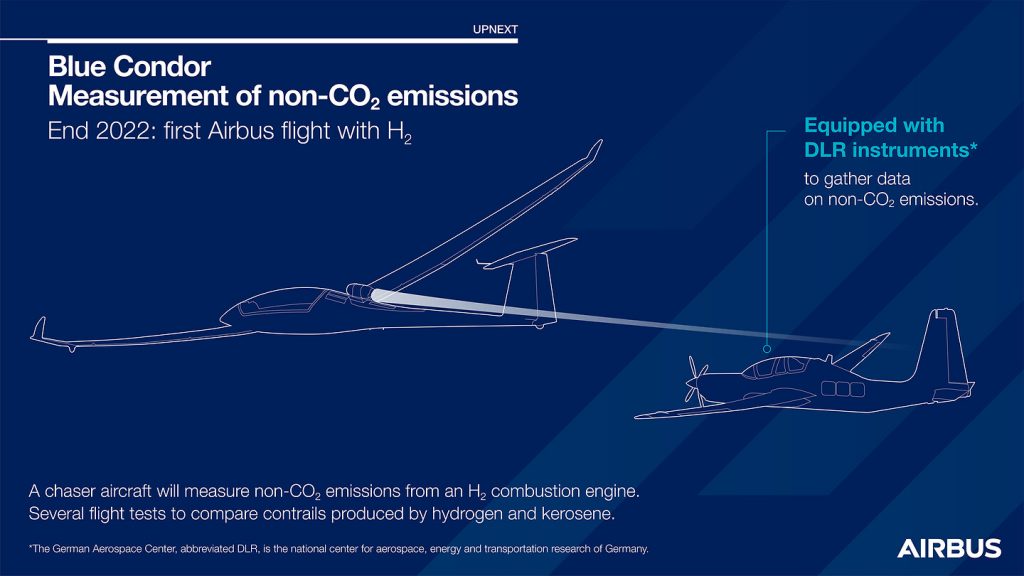
The Blue Condor demonstrator will be supported by the Perlan Project team, which will modify the Arcus gliders. They will also provide the high-altitude glider pilots that in 2018 set the world subsonic altitude record of 76,124ft in a pressurised glider for Airbus Perlan Mission II.
The German Research Centre DLR will collect and analyze data captured using its measurement instrumentation sensors on a chase aircraft, while Airbus will provide the hydrogen system and equipment, including the combustion engine and details of the flight test mission.
To ensure 100% comparable data between the hydrogen and conventional engine, the test flights will be carried out back-to-back under the same meteorological conditions.
Airbus is also conducting similar demonstration programs – including ECLIF3 (Emission and Climate Impact of Alternative Fuels) and VOLCAN (VOL avec Carburants Alternatifs Nouveaux) – to better understand contrails produced by sustainable aviation fuels.
Source: aerospacetestinginternational.com
Boom reveals new supersonic design and industry partnerships
Play below for the audible version of this article:
Boom unveiled a refined design of its supersonic airliner at the Farnborough Airshow today, shaped by more than 50 redesigns and validated by a series of wind tunnel tests.
The latest production configuration of its 65 – 80 seat Overture airliner features a streamlined fuselage that tapers to the rear and reshaped “gull wings” that provide improved manoeuvrability at low speed while ensuring its cruise speed of Mach 1.7.
The Overture will be 201ft long with a wingspan of 106ft, slightly smaller than a Boeing 737 or Airbus A320 single aisle aircraft. The supersonic airliner will have a range of 4,890 miles (7,870km) and be powered by four engines, which in the latest design have been moved further back along the fuselage to improve safety.
Blake Scholl, CEO of Boom Supersonic said, “We have conducted 26 million hours of simulation and confirmed our design with five wind tunnel tests.
“The intricately tailored fuselage applies a principle called area ruling that significantly improves supersonic efficiency. The new wing design balances supersonic efficiency with stability and control at lower speeds.
“It’s kind of like the Concorde and the 747 had a baby.”
Area ruling is an aerodynamic principle that to minimize drag the cross-sectional area changes smoothly along the aircraft from tip to tail.
Other changes include an increase in the wingspan to include flaps and slats which will enable a 20% improvement in low speed aerodynamic efficiency and a redesigned intake and nozzle on the engines to reduce noise. Boom is also developing software-based controls that will Scholl said will “dynamically optimise flaps, slats, engine thrust and climb to reduce noise on the ground”.
Boom plans to break ground on its factory later this year and fly Overture for the first time in 2026. Meanwhile the company is continuing to progress work on its one-third scale prototype XB-1 towards flight testing.
Scholl said, “We did XB-1 to learn the lessons that we need to make Overture a success. Overture’s design has been able to evolve based by what we have learnt from XB-1. Most of the team has shifted away from XB-1 to Overture but XB-1 is progressing well with brake tests today and the first taxi tests tomorrow.”
Industry partnerships
Boom also announced a series of supplier and industry partnerships at Farnborough this year. A partnership with US aerospace and defense firm Northrop Grumman will see the two companies jointly develop a special mission variant of Overture for use by the US military and its allies.
“This landmark strategic collaboration will bring the power of speed to the US and its allies around the planet. We see a multitude of possibilities, transporting troops, cargo, for just in time supply chains and rapid response.”
The partnership sees Boom move away from a focus on commercial applications for Overture.
Tom Jones, president of Northrop Grumman Aeronautics Systems said, “We are no strangers to high technology and we are always looking at the best ideas in the commercial sector that will enable critical capabilities for our customers.
“We are excited about the concept of a long range, high speed, high payload capacity airframe that can enable to our customers. Over the coming years we will be working with Boom to unlock the potential of the defence market.”
Boom also announced supplier partnerships with Safran on landing gear, Eaton on fuel systems and an expansion to its partnership with Collins to cover air data and ice protection
Scholl added that more supplier partnerships would be announced in the “coming months” for flight controls, structure and propulsion.
